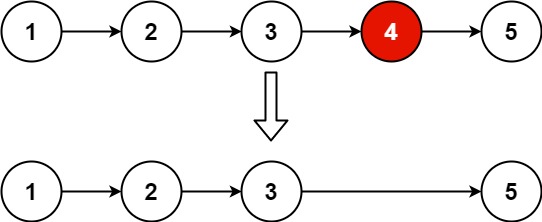topic:
Give you a linked list,Delete the countdown of the linked list n Node,And return to the head point of the linked list。
Exemplary example 1:

enter:head = [1,2,3,4,5], n = 2 Output:[1,2,3,5]
Exemplary example 2:
enter:head = [1], n = 1 Output:[]
Exemplary example 3:
enter:head = [1,2], n = 1 Output:[1]
hint:
- The number of nodes in the linked list is
sz 1 <= sz <= 300 <= Node.val <= 1001 <= n <= sz
Advance:Can you try to use a scanning implementation??
19.Delete the countdown of the linked listNNode.md
Thought:
It is definitely possible to solve the problem by taking dual traversal,但topic要求我们一次遍历解决问题,Then we have to diverge on our ideas。
我们可以设想假设设定了Double pointer p and q if,when q Pointed to the end NULL,p and q The number of elements separated from each other is n hour,Then delete p The next pointer completes the requirements。
Set up virtual nodes dummyHead direction head
设定Double pointer p and q,初始都direction虚拟节点 dummyHead
move q,until p and q The number of elements separated from each other is n
同hourmove p and q,until q direction的为 NULL
Will p 的下一Nodedirection下下Node
Code:
1 | class Solution: |
1 | class Solution { |
